
With the combined effect of state-owned enterprises (SOEs) reform and supply-side reform, listed companies controlled by central SOEs saw their performance moving toward positive trend in the first quarter.
Assets reorganization boosts growth
As of April 19, 220 listed companies controlled by central SOEs had disclosed their 2015 annual reports. In these companies, Aluminum Corporation of China Limited (601600.SH) and CRRC Corporation Limited (601766.SH) were among the top twenty that realized substantial growth in net profits.
Moreover, for listed companies controlled by central SOEs which issued the first quarterly report, six companies have seen year-on-year growth in net profit. Bluestar Adisseo Company (previously known as Blue Star New Chemical Material Co., Ltd) (600299.SH), which is controlled by Sinochem Group, and North Huajin Chemical Industries Co., Ltd. (000059.SZ), which is controlled by China North Industries Group Corporation (Norinco Group), have achieved outstanding performance, with net profits grew 911 million yuan and 546 million yuan from the same period last year, turning loss into gain.
It is worth noting that for listed companies controlled by central SOEs that largely reversed their performance in their annual reports and first quarterly reports, assets reorganization and de-capacity are effective ways for improving the quality and efficiency of development. CRRC Corporation and listed companies under China Merchants Group all announced or conducted assets reorganization in 2015, and their performances were greatly improved.
De-capacity is also an important way for listed companies controlled by central SOEs to realize profits growth. When explaining how the company turned loss into gain, Aluminum Corporation of China said that the company has enhanced operations management, further reduced production costs and closed down some production lines with losses, resulting in the costs of aluminum oxide and electrolytic aluminum to decline about 13 percent and 9 percent respectively; steadily carry out flexible production, effectively reducing losses; take various measures, including strengthening capital operation, liquidizing remnant assets and bringing in strategic investors, to optimize industrial distribution and enable the group to make profits. The company indicated that it will regard “reducing costs and improving efficiency, reform and innovation, and transformation and upgrading” as key points of work in 2016. It aims to reduce costs by complying with the market rule, implement reform in the process of costs reduction, and actively promote innovation, striving to make a leap forward from getting out of difficulty to transformation and upgrading.
In the context of supply-side structural reform proposed by the central government, SOEs, especially central SOEs as forerunners, should play a greater part in quality and efficiency improvement and production capacity absorption. Merger and reorganization (M&A) undoubtedly are important means,” said Chen Bin, managing director of Jinzheng Corporation. “Since China’s economy has entered new normal, to achieve balanced and sustainable economic growth through industrial transformation and upgrading is an important direction for future SOEs reform. China can leverage the capital market to optimize resource allocation, enabling the use of more factors to be prioritized in advanced industries and areas, and become important means of macroeconomic adjustment.”
As supply-side reform and SOEs reform continues to deepen, it is anticipated that more listed central SOEs will adopt M&A, de-capacity and structural adjustment to strengthen their competiveness in the market, and play a greater role in boosting economic and social development.
De-capacity and reorganization speed up
However, in the aforesaid 220 listed companies, 30 reported loss and 93 reported declined profits or greater loss. Most of these enterprises are involved in overcapacity industries such as coal, iron & steel, nonferrous metals, oil, transportation and etc. Notably, central SOEs in iron & steel and coal industries were still the worst performers of annual reports, with six out of the top ten central SOEs recorded the largest losses were iron & steel and coal enterprises.
“There are 286 central SOEs controlled listed companies on the Shanghai and Shenzhen bourses, accounting for 10 percent of the total number of listed companies and 20 percent of the total market capitalization. Most loss-making enterprises are concentrating in industries with overcapacity such as coal, iron & steel and nonferrous metals; some others run at loss due to problems of their own management. The State-owned Assets Supervision and Administration Commission (SASAC) promotes these enterprises to improve the quality and efficiency of development, adjust the structure of layout, intensify efforts in reorganization, integrate quality assets, and at the same time take a series of measures, including reducing costs and improving efficiency and enhancing innovation ability, to build the listed companies controlled by them into high quality listed companies,” Huang Danhua, deputy director of the SASAC said at a press conference during the two sessions.
Confronted with severe situation in coal and iron & steel industries, the State Council expressly proposed the goal of de-capacity. Since then, the central government has allocated 100 billion yuan special fund for the relocation of employees in coal and iron& steel industries. Various supporting policies are under preparation at present.
Shenwan Hongyuan Securities holds that since a large number of coal enterprises are state-owned ones which are overstaffed and rigid in management system, advancing SOEs reform and clearing some state-owned coal enterprises which are trapped in severe loss or impossible to stop loss will enhance the overall operation environment of the industry. Shenhua Group, China National Coal Group Corp. and China Coal Technology & Engineering Group Corp, three central SOEs involved in coal business, will see integration of coal business as proposed in the government’s work report. M&A are also possible in the future.
“2016 sees the beginning of supply-side reform and also big strides of SOEs reform. M&A and reorganization of enterprises will speed up and zombie enterprises will be obsoleted step by step to effectively solve overcapacity.” Market participants point out that M&A and reorganization, transformation and upgrading as well as exit of capacity are three means for de-capacity. As control over capacity tightens and policies get more goal-oriented in directions, China’s dilemma in coal and iron & steel industries will be gradually eased. The industry might see a new round of upsurge.
Reorganization of central SOEs to develop in two directions
The timetable on improving the quality and efficiency of development of central SOEs explicitly proposed by the SASAC at end-2015 is directed against the declining profit of central SOEs. It is proposed to “strive to achieve recovery growth of economic efficiency by 2016”, and “arrest performance slowdown of central SOEs and obviously lower the loss of enterprises seeing operation loss by end-2017.”
Li Jin, chief researcher with the China Enterprise Research Institute, remarked that improving performance quality and efficiency is a core work for SOEs in 2016. The top priority of central SOEs has changed from “ensuring growth” to “improving performance quality and efficiency”. SOEs will deepen reform from aspects including tapping potential, reinforcing management, lowering cost, enhancing efficiency and etc. Central SOEs should pursue efficiency in increasing increment, vitalizing stocking and enhancing management. M&A and reorganization will act as a central hub of the reform and development of SOEs in a certain period. M&A and reorganization might be achieved through alliance of giants, split and reorganization, mixed participation, shutdown, internal reorganization and etc.
Chuancai Securities believes that the reorganization of central SOEs will develop in two directions. The first is quality and efficiency-oriented reorganization which means that central SOEs grow better and stronger through M&A and reorganization, so particular emphasis will be placed on vertical integration or industrial chain integration. The second is to clear zombie enterprises. M&A and reorganization will be further advanced in industries with overcapacity such as iron & steel, cement, glass and electrolytic aluminum. De-capacity will be advanced in parallel with transformation and upgrading.
Translated by Adam Zhang & Jennifer Lu
















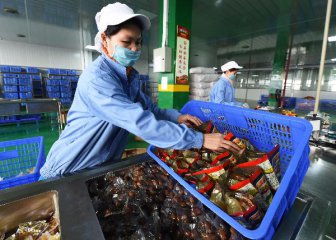
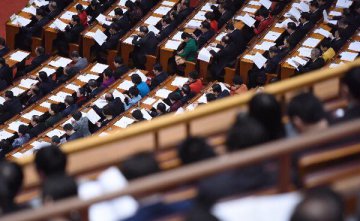
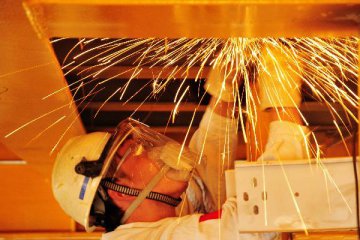
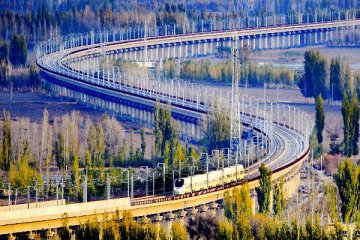
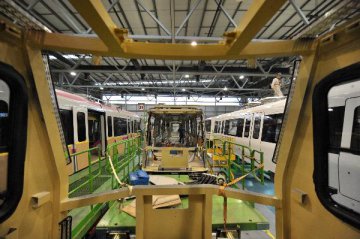
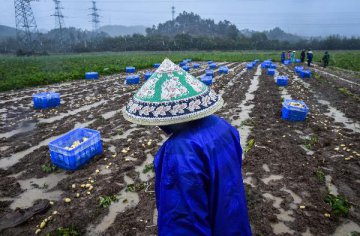


Latest comments